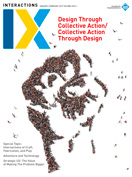Authors:
Steven Landry
How do you describe your lab to visitors? The Mind Music Machine (tri-M) Lab is an interdisciplinary research group based in cognitive science, human factors, and computer science at Michigan Tech. The mind is our ultimate research theme; music is our language and methodology; machinery is our research tool and an analogy of mind. The goal of the lab is to understand the mechanisms of the human mind and design better interactions between people and technologies. To this end, we use various instruments, such as computer vision technologies, a display wall, a digital audio workstation, driving simulators, neurophysiological equipment, robots, and toys.
Although we have varied backgrounds and skills, we share common interests in music, technology, and a curiosity about how people interact with technology. Our ultimate goal is to improve lives by designing better technologies. Currently we are focusing on projects in three major areas: using robots as therapeutic tools to help children with autism spectrum disorders improve their social skills; improving driving safety by developing easier-to-use infotainment controls, and by developing emotionally intelligent in-vehicle systems that reduce road rage; and creating musical compositions that are controlled by the movements of dancers. As our lab continues to grow, we are expanding our interests to virtual reality, augmented reality, and 3D sound design.
What is a unique feature of your lab? Our lab is one of the newest research labs in our program, but it's quickly growing into one of the largest in the university. This means we have more control over the direction our research takes. We are allowed and encouraged to take on any type of research we feel is important or interesting. A unique feature of our lab is the toys. We have access to the latest programmable robots, driving simulators, motion-tracking systems, electronic instruments, VR helmets, sound booths, and all other types of gadgetry that would make the 10-year-old version of ourselves drool.
The second half of the day might consist of explaining to neighboring labs what those strange sounds coming from our lab are, and how those sounds will one day change the world.
The broad range of our members' backgrounds has strengthened connections with professors across Michigan Tech's campus. Our lab has made a habit of partnering with professors across campus, across the country, and internationally. These partnerships broaden the range of technologies and tools that our lab members can access. Our connections have given us access to an interactive display wall, advanced eye-tracking systems, kinematic motion sensors, and even a whole classroom of trained sound designers. These connections have enabled us to write many more conference papers and publications than we ever could have if we used only our own equipment. Of course, we also share our time, efforts, and equipment with others in the community who need it, including making frequent trips to local K–12 classrooms to demo some of our work and inspire young students to consider futures in STEAM fields (science, technology, engineering, arts, and math).
Briefly describe a day in the life of your lab. A fairly typical day might involve drafting a conference paper, going to class, having a meeting, preparing an experiment, and bouncing new ideas back and forth over email, all before lunch. The second half of the day might consist of explaining to neighboring labs what those strange sounds coming from our lab are, and how those sounds will one day change the world.
How would you describe how people interact in your lab? Most projects are done in small interdisciplinary teams, so there is usually a lot of communication between collaborators. We tend to have a mix of face-to-face meetings both as a full lab and as teams. However, everyone has a different schedule and we're spread out across campus, so we also do a lot of asynchronous electronic communication. It's normal to be working on several different projects at once, which keeps the work interesting. Since we work so closely together and tend to be involved in many different projects with different lab members, we are a fairly tight-knit group with a friendly and cooperative culture.
What is the one thing you see as most important about the work you do there? Community outreach. We frequently visit local communities and elementary schools to demonstrate some of our research projects and interaction platforms in hopes of inspiring interest in STEAM fields.
We are also highly focused on accessibility for special populations. All of our lab members are related to, or at least know and care for, someone with special needs. A constant question in the back of our minds is "How can we use technology to improve the lives of those who need it most?" It is incredibly rewarding to know that the work we do has a positive impact for real families struggling to communicate with their loved ones.
https://sites.google.com/site/mindmusicmachinelab/
Copyright held by author
The Digital Library is published by the Association for Computing Machinery. Copyright © 2017 ACM, Inc.












Post Comment
No Comments Found